Six months after it released the P50 Pro in the Philippines, and for reasons we can only guess, Huawei released its smaller sibling, the P50. It packs a premium design, a beautiful display, and powerful cameras, for a lower price. But it also carried with it the cons that its bigger brother has. So, is the P50 a better choice? Find out in our review.
Table of Contents

While we can consider the P50 as the smaller brother of the P50 Pro, it is still every bit a premium flagship. The frame is still cold metal with a chrome finish.
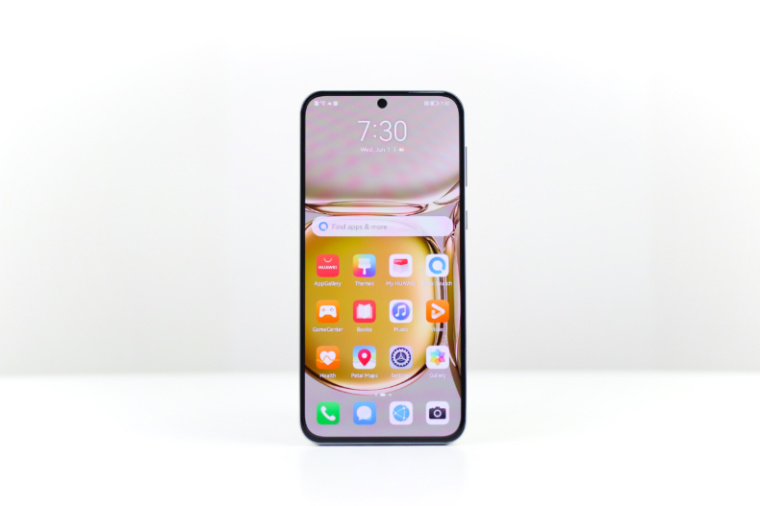
The front houses a slightly smaller 6.5-inch screen with an OLED panel and a resolution of 2700 x 1224 or equal to 458ppi. It also has a lower 90Hz refresh rate, and a flat screen, unlike the curved sides on the P50 Pro. Up top is the hole punch for the 13MP selfie camera.
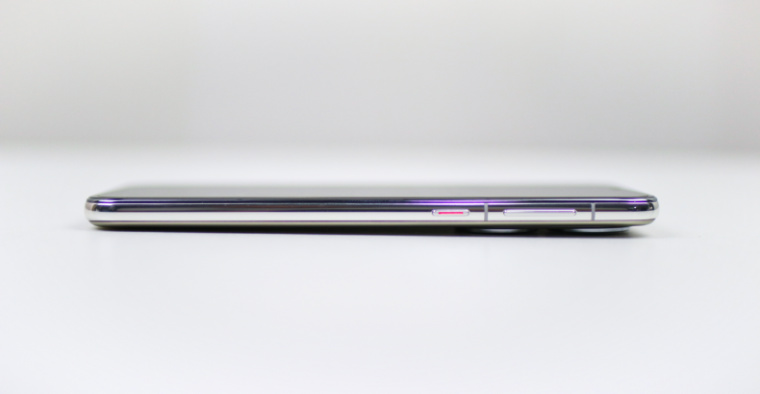
On the right side are the power/lock button and the volume rocker. They’re really firm and clicky. They’re positioned a bit close to the top of the frame but they’re still reachable.
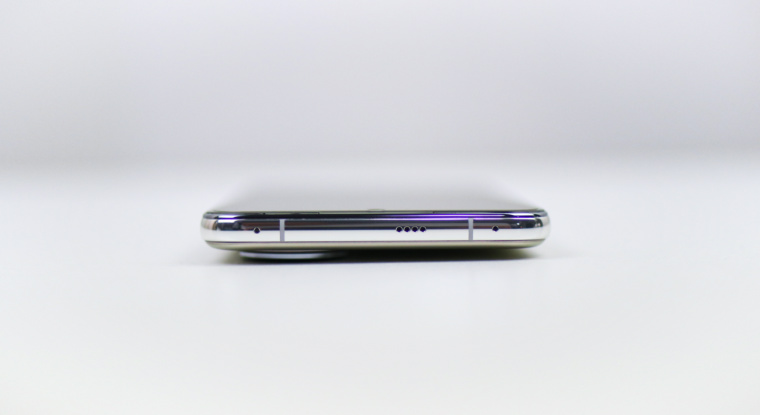
Up top, we have the microphones and the loudspeaker.
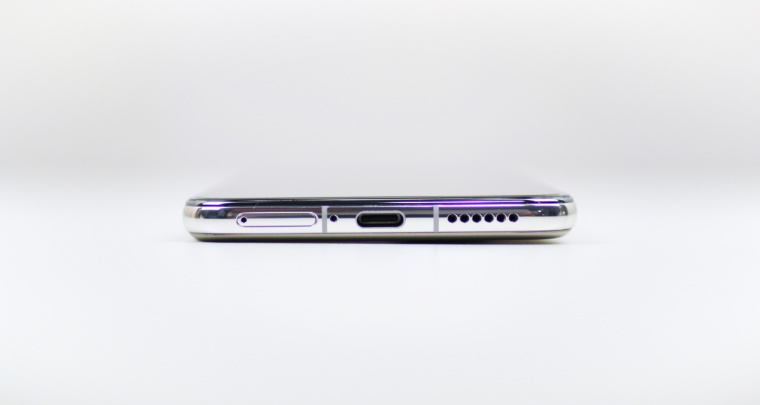
While down below, we have the USB-C port, loudspeaker, and card tray for two nano-sized SIM cards with the second slot able to accommodate Huawei’s NM cards.
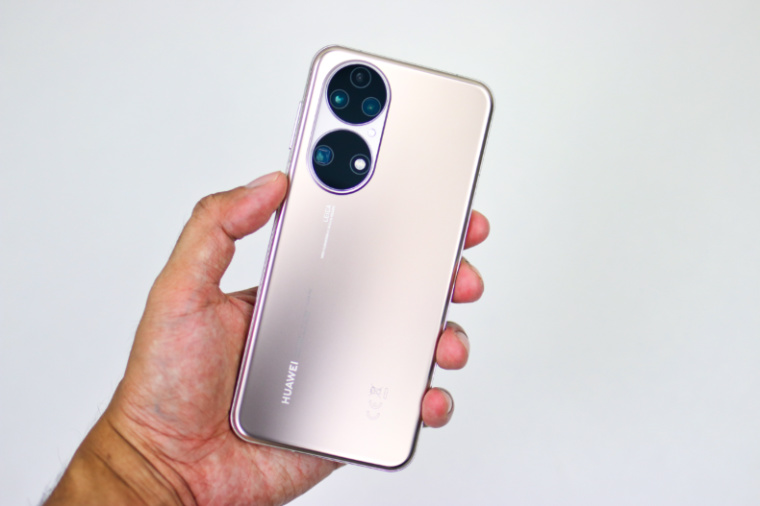
At the back, we have the protruding camera modules that house the 50MP main, 13MP ultra-wide, and 12MP telephoto. The back panel is also premium. It’s glass and has this frosted finish that can slightly repel smudges and fingerprints. It’s tough on dust and water as well, thanks to the IP68-certified body.
The P50 is 1mm wider than the P50 Pro but feels more compact. Probably because it has a shorter frame of 156.5mm and a thinner body measuring 7.9mm. It’s also lighter at 181g. So yeah, some might find the P50 to be easier to grip.
The Huawei P50 is equipped with a 6.5-inch screen with a Full HD+ resolution or equal to 458ppi. That’s a sharp screen for its size. The bezels are equally thin on the top, bottom, and sides, so it looks immersive with good viewing angles.

The colors are punchy and have deep blacks thanks to the OLED panel. When it comes to refresh rate, the P50 only has 90Hz compared to the P50 Pro’s 120Hz.
When it comes to quality, we like the screen of the P50. It may have a lower refresh rate than the P50 Pro but it still looks great. It also has stereo speakers so audio is also immersive, which we enjoy whenever we play games or watch videos.
The P50 is equipped with triple-rear cameras consisting of a 50MP main, 13MP ultra-wide, and 12MP periscope telephoto. For selfies, we have a 13MP shooter. Huawei is known for equipping their flagships with amazing cameras and the P50 didn’t disappoint.
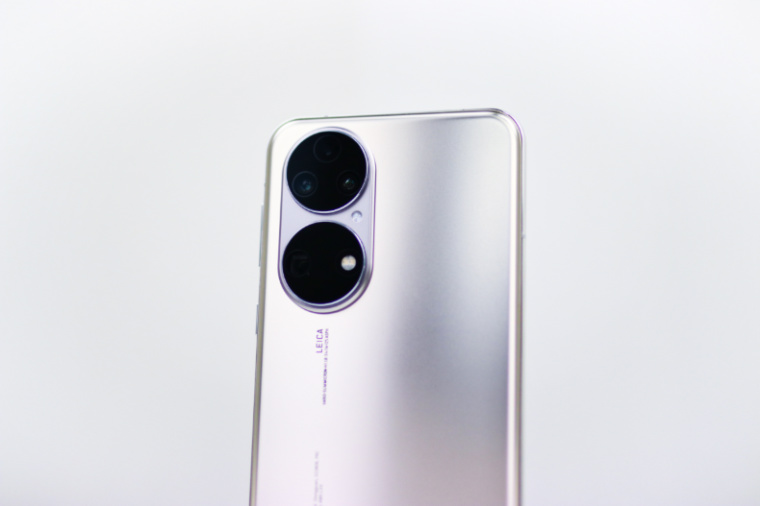
The images produced were sharp with high dynamic range and accurate colors, especially in bright conditions. Those taken at night look great as well as long as there’s enough ambient light. Although, you’ll have to keep in mind that it’s shooting with a slower shutter speed, so subjects can look blurred if they’re moving around. Zoom is good up to 5X optical. Go up to 10X and the details suffer.
Selfies, on the other hand, look great in bright conditions. But shoot in dim conditions and you’ll get images that are muddied and lacking in detail.
When it comes to videos, it can shoot up to 4K at 60fps. Video quality is good in daylight, but looks soft and noisy in low-light. Video stabilization works great, though, in keeping the footage steady.
Powering the Huawei P50 is EMUI 12.0.1. It works and behaves just like any other Android, uses multiple home screens to house apps, and has support for gesture navigation. What I didn’t like is that it comes with multiple folders with suggested games. If you want to remove them, you have to delete them one by one.

Speaking of apps, it uses HMS with AppGallery. The latter has improved over the years and now natively supports many of the popular apps in the Google Play Store. Apps that are not available are easily searchable with the help of Petal Search. If you know your way around Android and know where to download safe APKs, you can still sideload at your own discretion.
If you’re already into the Huawei ecosystem, you can start taking advantage of exclusive features like Huawei Share and the new Distributed File System, which works great if you have a MateBook or a MatePad. Just take a photo using the P50 and you’ll be able to access that photo right away on the MateBook laptop.
Powering the P50 is the Qualcomm Snapdragon 888 4G chipset. Same as the P50 Pro. Yes, there’s no 5G here. Max clock speed is at 2.84GHz, has an Adreno 660 GPU, 8GB of RAM, and 256GB of storage. For the software, we have HarmonyOS 2.

It’s not as powerful as flagships with the newer Snapdragon 8 Gen1 chipsets, but we can be sure that this device can still perform. We don’t even think you’d notice the difference. We played Honkai Impact 3 and Ni no Kuni: Cross Worlds and it ran smoothly. There’s warming but nothing out of ordinary. Check out the benchmark scores below.

• AnTuTu v9 – 802,927
• AnTuTu v9 Storage – 1,838.9 MB/s (Seq. Read), 730.7 MB/s (Seq. Write)
• PC Mark – 12,513 (Work 3.0)
• 3D Mark – 5,877 (Wild Life), 1,517 (Wild Life Extreme)
• Geekbench 5 – 1,040 (Single-Core), 3,267 (Multi-Core), 4,741 (OpenCL)
The Huawei P50 has dual-SIM, WiFi 6, Bluetooth 5.2, NFC, GNSS, and USB-C. It pretty much has everything in terms of connectivity, except for 5G. Like the P50 Pro, the P50 only works on 4G LTE, which can be attributed to the trade challenges and global chip shortage the company is facing.

This is a downer for users who want to utilize 5G in their area. However, if you rarely use 5G and are satisfied with the 4G LTE performance, then this shouldn’t affect you that much.
For the battery, it has a 4,100mAh capacity, which is a decent capacity. It’s slightly lower than the P50 Pro’s but still ok. Our video loop test got us 18 hours and 14 minutes of playback while PC Mark rated it at 11 hours and 41 minutes, which is still good in our books. Charging, on the other hand, is handled by 66W fast charging which can replenish the battery in a little over an hour.
The Huawei P50 is positioned to be a good alternative to the Huawei P50 Pro if budget is a concern. The latter is priced at PHP 45,999 while the former is just PHP 39,999. It has a nice design, a beautiful screen, and powerful cameras and performance.

The lack of 5G and Google Mobile Services are the obvious cons, but if you’re okay with 4G LTE, already in the Huawei ecosystem, and in need of a smartphone with one of the best camera systems in the market, the Huawei P50 is still a good phone to have.
Huawei P50 specs:
6.5-inch FHD+ (2700 x 1224) OLED display, 458PPI
90Hz refresh rate, 300Hz touch sampling rate
Qualcomm Snapdragon 888 4G processor
Adreno 660 GPU
8GB RAM
128GB, 256GB storage
Triple rear cameras:
• 50MP F1.8 (main)
• 13MP F2.2 (ultra-wide)
• 12MP F3.4 (telephoto)
13MP F2.4 front camera
4G LTE
Dual-SIM
WiFi 6
Bluetooth 5.2
NFC
GPS, A-GPS, GLONASS, Beidou, GALILEO, QZSS, NavIC
IP68 rating
USB Type-C
HarmonyOS 2
4,100mAh battery w/ 66W fast charging
156.5 x 73.8 x 7.92mm
181g
Black, Gold, White

YugaTech.com is the largest and longest-running technology site in the Philippines. Originally established in October 2002, the site was transformed into a full-fledged technology platform in 2005.
How to transfer, withdraw money from PayPal to GCash
Prices of Starlink satellite in the Philippines
Install Google GBox to Huawei smartphones
Pag-IBIG MP2 online application
How to check PhilHealth contributions online
How to find your SIM card serial number
Globe, PLDT, Converge, Sky: Unli fiber internet plans compared
10 biggest games in the Google Play Store
LTO periodic medical exam for 10-year licenses
Netflix codes to unlock hidden TV shows, movies
Apple, Asus, Cherry Mobile, Huawei, LG, Nokia, Oppo, Samsung, Sony, Vivo, Xiaomi, Lenovo, Infinix Mobile, Pocophone, Honor, iPhone, OnePlus, Tecno, Realme, HTC, Gionee, Kata, IQ00, Redmi, Razer, CloudFone, Motorola, Panasonic, TCL, Wiko
Best Android smartphones between PHP 20,000 - 25,000
Smartphones under PHP 10,000 in the Philippines
Smartphones under PHP 12K Philippines
Best smartphones for kids under PHP 7,000
Smartphones under PHP 15,000 in the Philippines
Best Android smartphones between PHP 15,000 - 20,000
Smartphones under PHP 20,000 in the Philippines
Most affordable 5G phones in the Philippines under PHP 20K
5G smartphones in the Philippines under PHP 16K
Smartphone pricelist Philippines 2024
Smartphone pricelist Philippines 2023
Smartphone pricelist Philippines 2022
Smartphone pricelist Philippines 2021
Smartphone pricelist Philippines 2020
Dave says:
You forgot to test the 4G data speed.. Please do a speed test @ speedtest.com